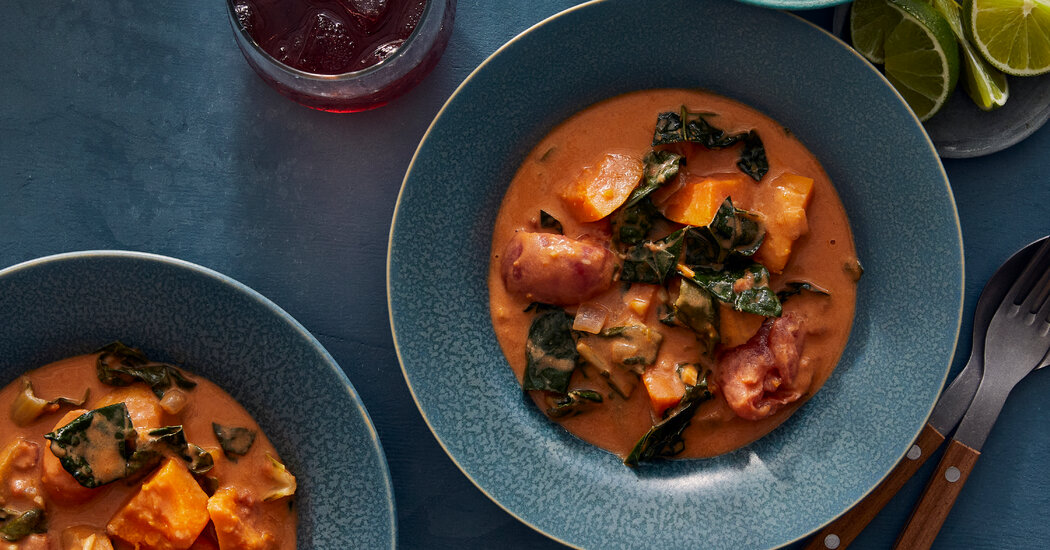
For me, fall feels incomplete without a day at Oko Farms, my dear friend Yẹmí Amu’s sustainable aquaponic farm on the Williamsburg, Brooklyn, waterfront, and the chance to get creative with whatever I bring home.
So, one late September weekend, when the weather began its subtle shift from summer to fall, my 3-year-old daughter, Aṣa, and I spent an afternoon there. The sun sparkled against the East River as we fed fish, plucked ripe bell peppers from their stalks, rubbed fresh lemongrass to inhale its aroma and picked a basket of fresh herbs.
We saw how Yẹmí’s fish are kept in raised tanks and how their filtered wastewater flows into the vegetables’ floating beds, providing nutrients for the produce. For Aṣa, this all felt like an interactive maze (there was a lot to see at a toddler’s eye level). She could peer over the tank’s edges to see plant roots submerged in water, with the stalks and leaves floating above.
When we got home, hungry and in need of something warm and soothing, we turned our farm-fresh bounty into a pot of maafé.
An adaptable peanut stew from Senegal, maafé has always been one of my fall comforts. It comes together with a few root vegetables, herbs, peppers and a protein, if you wish. A truly great one balances sweet, savory, salty, earthy and spicy.
Yẹmí and I both moved to New York from Lagos, and we share a passion for connecting with the idea of home through our work. I’ve witnessed the evolution of her farm, the ingenuity and physical labor that she puts into managing an urban aquaponics space. Each season, she adds a few crops that are native to West Africa, ingredients we know from the markets and farms back home: hot chiles, scent leaves, sorghum and melon seeds, and so many more.
And each season, whether I’m developing recipes or just cooking for my family, she knows I’ll be checking in when the harvest is ready. I’ll incorporate some of her produce into my maafé for as long as I can, because I know the dish works in so many forms.
Maafé is often called West African peanut stew, but that’s an oversimplification. Across the region, there are many versions that feature peanuts as a base, all greatly nuanced: for example, akitiwa in Togo, nkatenkwan in Ghana and miyan taushe across northern Nigeria. In fact, it was miyan taushe that brought me to maafé. In Lagos, my parents and I would make miyan taushe with the leafy greens, herbs and squash that grew in our backyard throughout the year, slipping the bounty into a rich groundnut-based sauce.
My maafé, now that I live in New York, is a small part of my ever-evolving story of home, as I gather and adapt whatever I can to recreate the flavors I remember. Oko Farms is an extension of that, a space of pure delight and one that allows me to revisit pieces of my childhood — a cherished experience to share with Aṣa.
Maafé can be your highly adaptable stew, too. It plays well with any mix of proteins or vegetables. Immersed in a peanut-infused sauce, each ingredient’s flavor still shines. Cubes of beef, lamb, chicken, seafood or tofu do well here — but why not let fall’s bounty be the only inspiration you need?
Recipe: Vegetable Maafé



